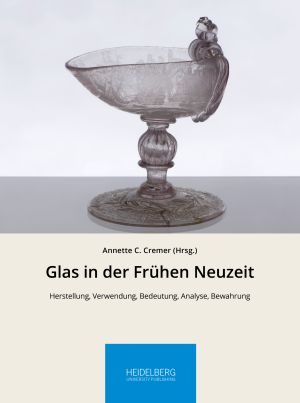
How to Cite
License

This work is licensed under a Creative Commons Attribution-ShareAlike 4.0 International License.
Identifiers
Published
Glas in der Frühen Neuzeit
Herstellung, Verwendung, Bedeutung, Analyse, Bewahrung
The production of glass was one of the high technologies of the early modern period. At a heat of around 1500 degrees, mixtures of sand, lime and vegetable, wood or potash were transformed into greenish, crystal-clear or colorful marvels in the glassworks of Europe. Its aesthetic and material properties-transparency, workability, and durability-made glass a coveted material that was still the preserve of the elite in the 16th century and did not become an affordable mass product until the second half of the 18th century.
The volume Glass in the Early Modern Period pursues an interdisciplinary approach. It takes its starting point in the conditions of glass production in early modern glassworks, the high consumption of resources, and the resulting social conflicts. The volume focuses on the various historical forms of use, glass as an object of collection, and its allegorical meaning in painting. At the same time, the volume deals with the analysis and preservation of glass objects from a scientific and conservation perspective and with the presentation of baroque glass from a museum perspective. In all of this, a close connection to the court culture of the European nobility is apparent, who acted as pioneers, patrons and, not least, buyers, users and collectors of the glass objects. In this way, many of the luxury objects have been preserved to this day.
Media coverage
Michaela Heinze, in: Das Historisch-Politische Buch 70, 1 – 2 (2022).



